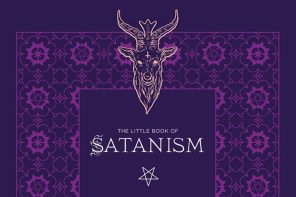This weekend, a second attack by a knife-wielding teenage girl was attributed to the online Slender Man mythos. While the attack could be a copycat crime, the connection to Slender Man is speculative. The odds of a wave of meme-driven girls hacking their way through America’s suburbs seem—well—slim. It requires exceptional circumstances for a preoccupation with a legend to manifest into actual violence.
Given the long history of panic in America I’m more concerned about a moral panic in which all manner of tragedy and misfortune is attributed to Slender Man. We harbor a morbid fascination with the idea that some insidious force will turn our children against us. As folklorist Timothy Evans pointed out in The New York Times, stories of adolescents driven mad by Ouija boards, Dungeons & Dragons, and other deviant media are themselves a form of folklore. Ironically, our horror and fascination over these crimes makes Slender Man even more fascinating and fuels the legend complex further.
Somewhat like the Greek myth of Cronus, Americans have a deep-seated fear that their children will overthrow them. During the Red Scare, it was the communists who could reportedly persuade impressionable youth to kill their parents. In the 1970s, it was “cults.” In the 1980s it was Satanists. In 1996, while crime waves dropped across the country, both Bob Dole and Bill Clinton vowed to protect America from “Super Predators”—youth born into a state of “moral poverty” that threatened to destroy America in a tide of violence. Our current fascination with dangerous Internet memes follows closely on the heels of an alarm over “the knockout game.”
Of course, there are examples of teenage Satanists, youtube videos of adolescents attacking people in public, etc. But moral panic over these activities and ostensive performance of them are two sides of the same coin. As with the classic example of the “rainbow party,” jeremiads about the alleged deviant behavior of adolescents work to familiarize teenagers with a script of how they should behave.
Since my last post on Slender Man, several hardcore fans have informed me that Slender Man is an actual supernatural entity, not an Internet meme. One supernatural explanation is that Slender Man is a “tulpa”—a “living thought form” brought to life by sheer concentration and belief. The term originates in the writings of Alexandra David-Neel and Walter Evans-Wentz, who visited Tibet in the 1920s. As noted by Donald Lopez, these writers were dependent on translators and their ideas often reflect Western Theosophy rather than Tibetan Buddhism. Much like the Jewish story of the golem, tulpas are regarded as dangerous and prone to rebellion. (David-Neel claims she created one in Tibet but had to put it down).
Whether one believes in the paranormal, the tulpa is a useful metaphor for legend complexes, which become more potent the more discourse is generated about them.
If we really want to stop Slender Man’s influence, the best thing we can do is ignore him: Stop putting his image in every article about the stabbings, take down the comments sections littered with screeds that Slender Man is real, and banish him back to the horror “pasta” sites that are his natural habitat. Of course, doing this would require sacrificing our own morbid and vicarious enjoyment of the mythology.




